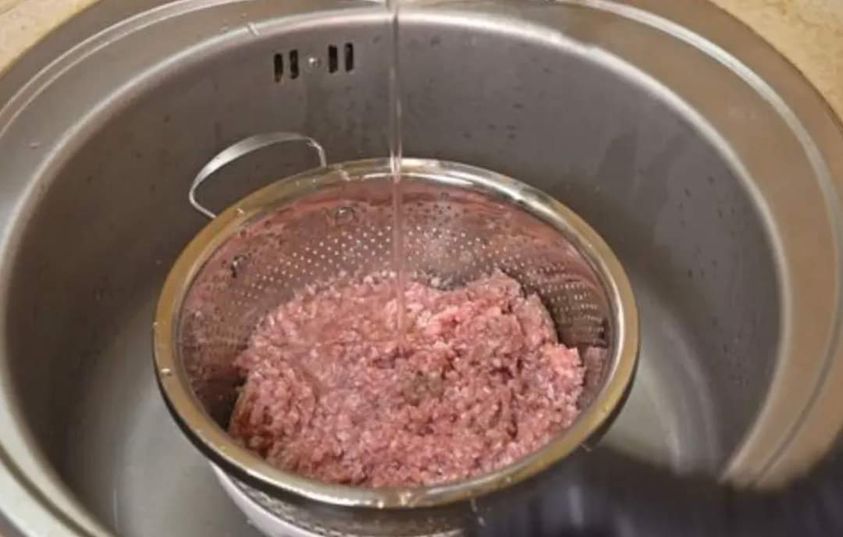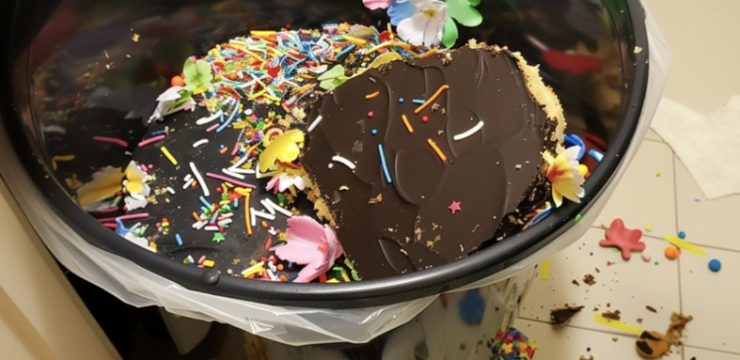If you’ve ever found yourself wondering whether you should rinse ground beef before or after cooking, you’re not alone. This topic sparks debate among home cooks and chefs alike. Some believe rinsing reduces fat and improves health, while others argue it strips away flavor. So, what’s the right move? Let’s break down the facts and finally answer the question: should you rinse ground beef?

Why Some Cooks Rinse Ground Beef
The Health-Conscious Approach
For those looking to reduce the fat content in their meals, rinsing ground beef can seem like an easy solution. The idea is simple—by rinsing off the excess grease, you’re left with a leaner product, perfect for those watching their calorie intake. This might sound appealing, especially if you’re trying to avoid greasy meals. After all, who doesn’t love a healthier dish?
Reducing Grease for a Lighter Meal
Some cooks argue that by rinsing off the fat, you also eliminate that overly greasy texture that can sometimes weigh down a meal. This technique can make the dish feel lighter, especially in recipes like tacos or casseroles. So, if you’re aiming for a meal that’s a little easier on the stomach, rinsing may seem like a logical step.
Why Others Say You Shouldn’t Rinse Ground Beef
Flavor Lost with the Fat
On the flip side, many chefs and culinary enthusiasts argue that rinsing ground beef is a big mistake. Why? Because you’re not just washing away fat, you’re also rinsing away flavor. Fat plays an essential role in keeping meat juicy and flavorful. When you rinse it off, you risk ending up with dry, tasteless meat. The last thing you want is for your burgers or spaghetti sauce to taste bland.
The Importance of Fat in Cooking
Fat is the flavor carrier in cooking—it helps retain moisture and creates that rich, mouthwatering taste in your dishes. By removing the fat, you’re sacrificing the natural oils that make ground beef so delicious. That juiciness? It’s all in the fat. Without it, your ground beef could turn out dry and crumbly, far from the succulent texture you’re aiming for.
The Mess and Plumbing Issues
Splashing Fat Everywhere
Beyond the flavor debate, there’s a practical side to consider. Rinsing ground beef can create quite a mess. Think about it—when water hits the greasy meat, it splashes fat and grease all over your sink and countertop. Cleaning up after cooking is already a hassle, so why make more work for yourself by adding to the mess?
Risk of Clogging Your Pipes
Even more concerning, if you rinse the fat down the drain, you could face a whole new problem—clogged pipes. As fat cools, it solidifies, and dumping it down your drain can lead to costly plumbing repairs. Instead of rinsing, it’s much safer to let the fat cool, solidify, and scrape it into the trash.
Alternative Ways to Handle Ground Beef Fat
Draining Without Rinsing
If you’re trying to cut back on fat but don’t want to sacrifice flavor, consider draining the fat rather than rinsing it. After cooking, simply tilt the pan and use a spoon to remove excess grease. This method keeps the flavor intact while reducing some of the fat content, offering a happy medium between health and taste.
Using a Paper Towel
Another method to deal with excess fat is blotting the ground beef with a paper towel. After draining, you can pat the meat to soak up any remaining grease. This technique is quick, easy, and minimizes the mess—without losing flavor in the process.
When Should You Consider Rinsing Ground Beef?
Lower-Fat Diets
If you’re on a strict low-fat diet, rinsing ground beef may help you reduce fat intake. However, be mindful that you might be sacrificing the richness and texture of your meal. In this case, you could opt for lean ground beef (93% lean or higher) to avoid excess fat without rinsing.
When Cooking for Certain Recipes
Some dishes may call for a lighter, less greasy texture, like when preparing dishes that mix ground beef with other proteins or vegetables. In such cases, a quick rinse might help balance the dish, but it’s important to consider how much flavor you’re willing to lose.
Ground Beef Tips for the Best Results
Choose the Right Ground Beef
Selecting the right ground beef from the start can make a huge difference. If you’re worried about fat, opt for leaner cuts. Ground beef comes in various fat-to-lean ratios, such as 80/20 (80% lean, 20% fat) or 93/7 (93% lean, 7% fat). The leaner the beef, the less fat there will be to deal with during cooking.
Cooking Techniques to Retain Moisture
If you’re going for full flavor and richness, make sure to cook ground beef in a way that retains moisture. Avoid overcooking, as this can dry out the meat, especially if you’re working with leaner beef. Sautéing or browning in a skillet works well, but make sure not to cook it too long.
Should You Rinse Ground Beef? The Final Verdict
Personal Preference Rules
Ultimately, the decision to rinse or not comes down to personal preference. If you’re focused on cutting fat, rinsing may help you achieve a lighter dish. However, if you’re chasing flavor, juiciness, and tenderness, skipping the rinse is the way to go. Balancing health and taste is key, and the choice is yours based on what you prioritize in your meals.
What’s the Best Option for You?
Consider your goals: are you trying to cut calories, or do you want that rich, beefy flavor? If fat is your main concern, opt for lean ground beef and use non-rinsing techniques to remove grease. But if you’re all about taste, leave the fat in—it’s what gives your dishes that mouthwatering depth of flavor.
Choose What Works for You
There’s no definitive answer to the great ground beef rinsing debate. Both sides have valid points, and ultimately, it’s about what works best for your kitchen and your palate. Next time you’re cooking ground beef, weigh your priorities—whether it’s cutting fat or maximizing flavor—and choose the approach that suits your taste. After all, the best meal is one that you enjoy, no matter how you prepare it.





